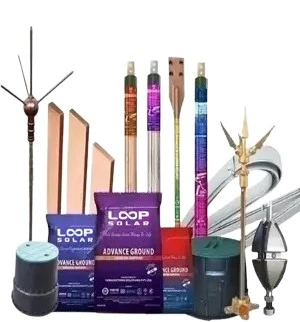We supply all across India. As an authorized wholesaler, distributor and stockist of solar panels and inverters for the rooftop solar market.
Fast delivery is available in the following locations: Andhra Pradesh (Adoni, Amaravati, Anantapur, Bhimavaram, Chittoor, Dharmavaram, Eluru, Gudivada, Guntakal, Guntur, Hindupur, Kadapa, Kakinada, Kavali, Kurnool, Machilipatnam, Madanapalle, Nandyal, Narasaraopet, Nellore, Ongole, Proddatur, Rajahmundry, Srikakulam, Tadepalligudem, Tadipatri, Tenali, Tirupati, Vijayanagaram, Vijayawada and Visakhapatnam), Assam (Bongaigaon, Dibrugarh, Guwahati, Jorhat, Nagaon, Silchar, Tezpur and Tinsukia), Bihar (Arrah, Aurangabad, Begusarai, Bettiah, Bhagalpur, Bihar Sharif, Buxar, Chapra, Danapur, Darbhanga, Dehri, Gaya, Hajipur, Jamalpur, Jehanabad, Katihar, Kishanganj, Motihari, Munger, Muzaffarpur, Patna, Purnia, Saharsa, Sasaram and Siwan), Chandigarh, Chhattisgarh (Raipur, Bhilai, Korba, Bilaspur and Durg), Delhi (New Delhi), Gujarat (Ahmedabad, Anand, Bhavnagar, Gandhidham, Gandhinagar, Jamnagar, Junagadh, Mehsana, Morbi, Nadiad, Rajkot, Surat, Surendranagar Dudhrej and Vadodara), Haryana (Faridabad, Ambala, Bhiwani, Gurgaon, Karnal, Panchkula, Panipat, Rohtak, Sirsa, Sonipat and Yamunanagar), Himachal Pradesh (Shimla), Jammu & Kashmir (Srinagar and Jammu), Jharkhand (Bokaro, Deoghar, Dhanbad, Giridih, Hazaribagh, Jamshedpur, Mango, Medininagar, Phusro, Ramgarh and Ranchi), Karnataka (Bangalore , Belgaum, Bellary, Bidar, Bijapur, Davanagere, Gulbarga, Hospet, Hubli–Dharwad, Mangalore, Mysore, Raichur, Shimoga, Tumkur and Udupi), Kerala (Alappuzha, Kochi, Kollam, Kottayam, Kozhikode, Thiruvananthapuram and Thrissur), Madhya Pradesh (Bhind, Bhopal, Burhanpur, Dewas, Guna, Gwalior, Indore, Jabalpur, Katni, Khandwa, Morena, Ratlam, Rewa, Sagar, Satna, Shivpuri, Singrauli and Ujjain), Maharashtra (Ahmednagar, Akola, Ambarnath, Amravati, Aurangabad, Bhiwandi, Bhusawal, Chandrapur, Dhule, Ichalkaranji, Jalgaon, Jalna, Kalyan-Dombivli, Kolhapur, Latur, Malegaon, Mira-Bhayandar, Mumbai, Nagpur, Nanded, Nashik, Navi Mumbai, Panvel, Parbhani, Pimpri-Chinchwad, Pune, Sangli-Miraj & Kupwad, Satara, Solapur, Thane, Ulhasnagar and Vasai-Virar), Manipur (Imphal), Mizoram (Aizawl), Odisha (Berhampur, Bhubaneswar, Cuttack, Raurkela Industrial Township, Rourkela and Sambalpur), Puducherry (Ozhukarai and Pondicherry), Punjab (Amritsar, Bathinda, Jalandhar, Ludhiana, Patiala and Phagwara), Rajasthan (Ajmer, Alwar, Bharatpur, Bhilwara, Bikaner, Jaipur, Jodhpur, Kota, Pali, Sikar, Sri Ganganagar and Udaipur), Sikkim (Gangtok), Tamil Nadu (Ambattur, Avadi, Chennai, Coimbatore, Dindigul, Erode, Hosur, Kumbakonam, Madurai, Nagercoil, Pallavaram, Pudukkottai, Salem, Thanjavur, Thoothukudi, Tiruchirappalli, Tirunelveli, Tiruppur, Tiruvottiyur and Vellore), Telangana (Hyderabad, Karimnagar, Khammam, Mahbubnagar, Miryalaguda, Nizamabad, Ramagundam, Secunderabad, Suryapet and Warangal), Tripura (Agartala), Uttar Pradesh (Agra, Aligarh, Allahabad, Amroha, Bahraich, Ballia, Bareilly, Bulandshahr, Etawah, Farrukhabad, Fatehpur, Firozabad, Ghaziabad, Gorakhpur, Hapur, Jaunpur, Jhansi, Kanpur, Khora, Ghaziabad, Loni, Lucknow, Mathura, Mau, Meerut, Mirzapur, Moradabad, Muzaffarnagar, Noida, Orai, Raebareli, Rampur, Saharanpur, Sambhal, Shahjahanpur, Unnao and Varanasi), Uttarakhand (Dehradun and Haridwar) and West Bengal (Asansol, Bally, Baranagar, Barasat, Bardhaman, Berhampore, Bhatpara, Bidhannagar, Chinsurah, Durgapur, Gopalpur, Haldia, Howrah, Kamarhati, Kharagpur, Kolkata, Kulti, Madhyamgram, Maheshtala, Malda, Naihati, North Dumdum, Panihati, Raiganj, Rajpur Sonarpur, Serampore, Siliguri, South Dumdum and Uluberia).
